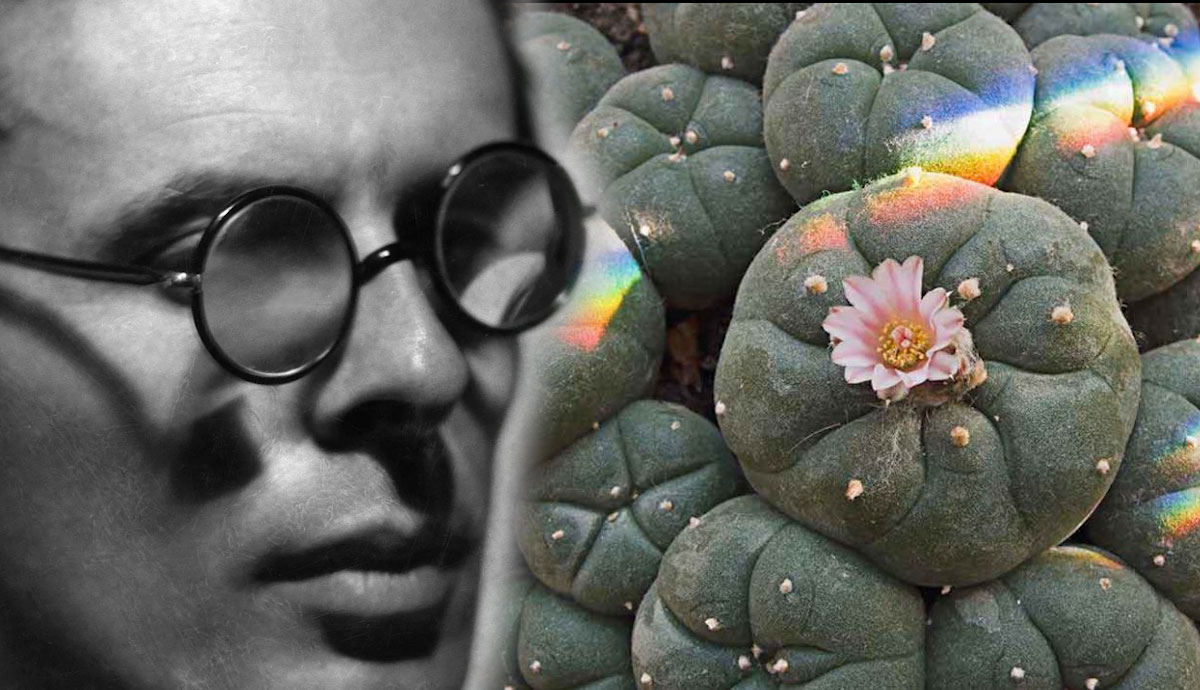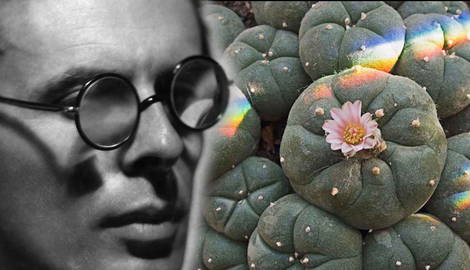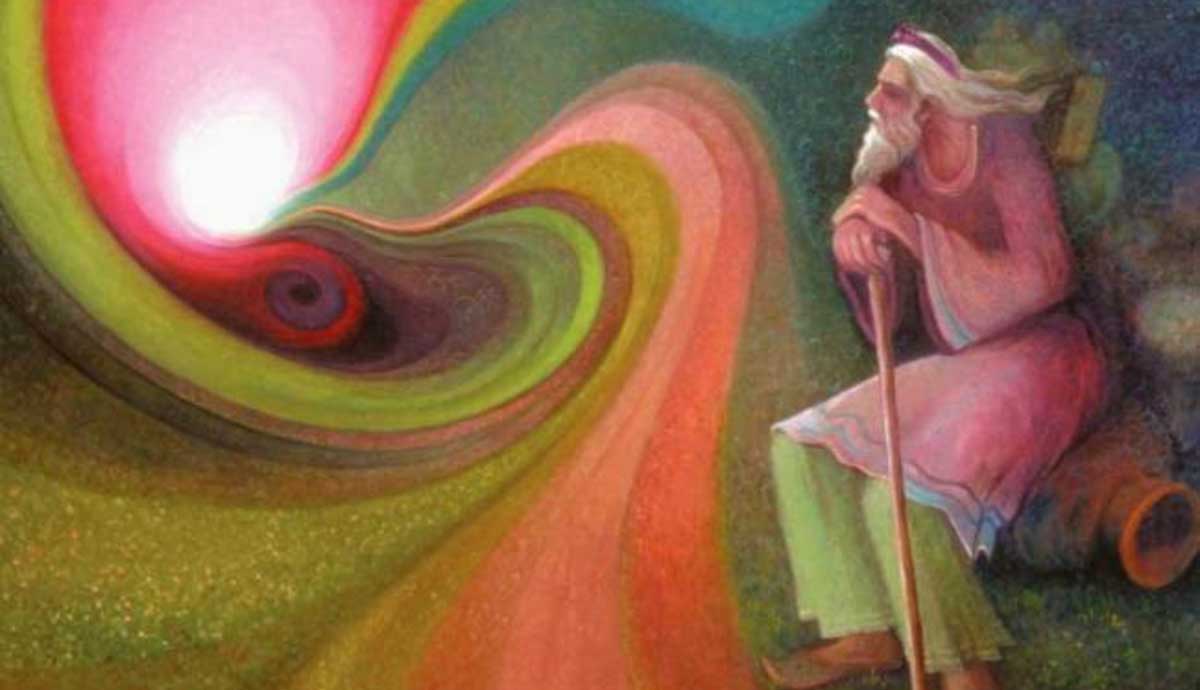
Aldous Huxley is an English novelist and philosopher best known for his dystopian science-fiction book Brave New World, published in 1932, which is now considered to have been ahead of its time.
Brave New World was his turning point, where he began to express his distrust in 20th-century politics and technology. Four years later, Eyeless in Gaza was published, which shared similar themes to his iconic work, but also revealed his increasing interest in Hindu philosophy and mysticism. This leads to the written works we will be exploring in this article, which revolve around his explorations into perennial philosophy and the potential of human consciousness.
1. The Perennial Philosophy: All Religions Share an Origin

Before examining Huxley’s novel, The Perennial Philosophy (1945), understanding the history of the philosophy in question is important. The term was first coined by the Renaissance humanist Agostino Steuco in 1540. The defining belief is that all world religions since the dawn of time share the same metaphysical truth, and the doctrines that are born from each have the same place of origin.
Every religion’s common goal is to overcome the ego and awaken reality. This path of enlightenment is achieved through daily meditation and training to detach from the self. By embodying this total selflessness, the true nature of reality can be discovered.
In Huxley’s take on this belief system, he quotes leaders from a diverse array of religious backgrounds, including followers of Muslim, Hindu, Christian, and Jewish theologies. He states that there are three elements that overlap between all of these: that God is the absolute eternal Being, the state of our minds echoes this, and that we can embrace a euphoric attitude by acknowledging this. Through this process, the self is eliminated, and the identity is connected to “That” instead of “Who.” Moving closer to identifying with “That” means moving closer toward encompassing an infinite being.
In the first half of his life, Aldous scoffed at religion, which was influenced by the ideologies held by his grandfather, Thomas Henry Huxley. His predecessor was a well-known biographer who denounced Christianity and preached evolutionary science as a religion.

However, Aldous’ convictions began to transform in the 30s when he began engaging with BBC’s first science journalist, Gerald Heard. Heard had a theory that psychology and science could prove that spiritual methods like meditation were functional. Huxley joined with him, and they became major leaders in the Pacifist movement and distinguished members of the Vedanta society, Vedanta being a form of Hindu mysticism.
In the late 30s, during all these changes, Huxley made the move to Southern California. When World War 2 started, many people from home criticized this move to the States. This novel was published right after the war and targeted a Christian audience, including the people around him from childhood.
Huxley’s goal was to bring awareness to a new approach to Christianity, integrating Eastern and Western mysticism. This written work brought to light teachings that were unfamiliar to western audiences at the time, such as the beliefs of Buddha, Zhuang Zi, and Rumi. This desperate reaction to war and the “Age of Noise,” as he called it, abhorred the worship of revolution, technology, and the nation-state, which he considered “religions of time” that would not last. His rebellion against violence was founded in the idea that only when one accepts perennial philosophy as the “highest common factor” between religions, violence could cease.
It was not until 1953 that he truly had a mystical experience, which led him to believe perennial philosophy could gain the following he desired. It was through mescaline that he reached a heightened state of being, something he outlined in his book The Doors of Perception.
2. The Doors of Perception: The Power of Psychedelics

Huxley had become interested in the enlightening properties of drugs used in different religions. He first heard about the peyote cactus and its potential for visionary experiences in the Native American Church in New Mexico after moving to the states in 1937. He learned about mescaline, an active psychedelic agent of peyote, from British psychiatrist Humphry Osmond’s paper related to schizophrenia research.
Peyote was initially introduced to Western civilization as a substance that could open the unconscious. Alkaloids of the peyote and San Pedro Cactus were isolated in 1897, including mescaline, which was then synthesized in 1919.
In Huxley’s novel The Devils of Loudun (1952), the epilogue states his distaste for drugs, which he perceived to be a cheating method to reach self-transcendence. His opinion switched when he learned mescaline was non-addictive and caused no mental side-effects. And although he preached hypnosis and meditation on a natural level, his attempts to reach the state he desired were failing.
Huxley contacted Osmond through a letter, asking to participate in an experiment to observe the effects of mescaline in a controlled environment. Osmond accepted the request, and The Doors of Perception (1954) details Huxley’s spiritual experience under the influence.
The title is inspired by William Blake’s poem “The Marriage of Heaven and Hell,” specifically the quote:
“If the doors of perception were cleansed everything would appear to man as it is, Infinite.”
Instead of viewing hallucinations and tricks of the mind as “distortions” or “disorders,” he argued these visions were representative of a truer reality. The analytical lens he perceived mescaline through encouraged the drug to be considered as a channel for spiritual healing and philosophical growth, for anyone from artists to intellectuals.

One of the first visual phenomena he witnessed on the day of his life-changing experiment simply involved a flower arrangement. It appeared he was, “seeing what Adam had seen on the morning of his creation – the miracle, moment by moment, of naked existence.”
The most seemingly insignificant details, such as the folds in his trousers, transformed into the most beautiful creative expression, as if his pants were designed by Botticelli. His personal philosophy, that the individual already holds the key to awareness and not a divine power, was confirmed through this special sight that was enhanced. Vision beyond human sensation was granted within, the concept of time vanished, and the feeling of “being” consumed him, as well as the feeling of the objects around him “being.”
One surprising discovery that came from this trial was his growing lack of faith in religion as a means of transcending the self. Basically, he questioned why he would join an organized religion that doesn’t lead to the results he wanted when he could use psychedelic drugs instead.
In perennial philosophy, detaching from the self is the objective, and during his trip, he became the “Not-Self” he had always strived to become through natural spiritual methods and religious practices. Also, he knew that the non-religious were also drawn to reaching a higher level of consciousness, and religion couldn’t be the only way to achieve this. Through his spiritual journey aided by mescaline, he realized the limitlessness of our minds and how open our doors of perception could be.
3. Heaven and Hell: The Antipodes of the Mind

Two years after his novel outlining his mescaline experience was released, a philosophical essay titled “Heaven and Hell” was published. Once again, the title is influenced by William Blake. Following the interpretation and analysis of his trip, he explored the two opposite encounters in the spiritual realm and reality that could result from opening the doors of perception. The paradoxical conjunction of heaven and hell is symbolic in illustrating the different directions the mind could wander to.
Huxley defines “antipodes” as the different mind regions that can be reached through meditation, sleep deprivation, and through chemical substances like mescaline. He concluded that the latter method was the most effective, which can be seen through his realizations in The Doors of Perception.
The antipodes can only be traveled to when the brain is biologically disabled; due to their uselessness at a utilitarian level, the antipodes can’t be known without turning off more high-functioning areas. Although they don’t add biological value, their spiritual significance is beyond comprehension, and their existence is where all religion originates from. One example Huxley provides was that of Medieval Christians, who reported having visions of Heaven and Hell during winter—when malnutrition was high, causing hallucinations. With psychedelics, inflicting physical harm to the body isn’t necessary to reach enlightened states.

One main symbol he explores in the essay is that of light. He writes that the majority of our dreams lack light, while the majority of psychedelic experiences are saturated with light. Many people record seeing brightly colored gems, with many different geometrical forms being illuminated.
In contrast, there is also a darkness that can be felt, hence the “hell” in the title. An example of this is the torturous life of schizophrenics, who are unable to escape from the altered reality that drug users only experience for a few hours under the influence. He uses “The Metamorphosis” by Franz Kafka to illustrate his point that opening consciousness doesn’t always produce a feeling of divinity and beauty.
Another focus lies in artwork’s ability to transport our minds to a more visually rich existence. He criticizes modern art, with its color and distraction, as a less potent agent of insight and enlightenment. Observing art and practicing religion are alternatives to attempting to replicate supernatural visions triggered by mescaline. He spends part of this work evaluating the power of art and religion after feeling the full power of psychedelics.
Observing these three pieces of written work Huxley produced over the years shows the evolution of his philosophical and spiritual beliefs. His views on perennial philosophy and the impact of mescaline on consciousness brought awareness to Eastern religious leaders and thinkers in Western civilization and influenced the psychedelic drug movement.











